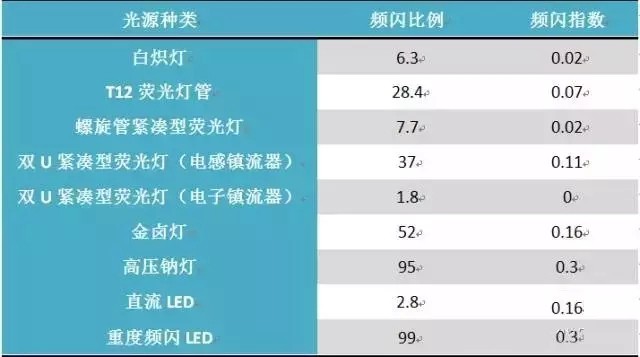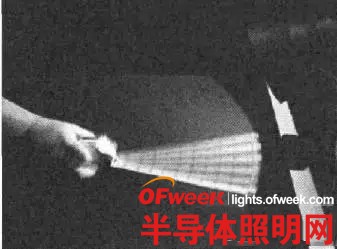When assessing the influence of light source on the human eye, it is inevitable to mention stroboscopic. With the advancement of electric light source technology and the deepening of people's understanding of photobiological, solving the stroboscopic problem is undoubtedly a key to achieving healthy lighting.
When people are in a lighting environment, it does not seem to be noticeable. In fact, there is not much intuitive perception of the concept of strobe, except for warning-like flashing marks or lamp failures. When observing the rotating fan blades, it is found that the blades are sometimes "stationary" and sometimes "rotating", and this phenomenon can also occur in the running car tires, which can be explained as the visual persistence caused by the stroboscopic light source.
In the figure below, there is a white point on the black disc. When the disc rotates, the continuous change of graph a will occur under the condition of no stroboscopic illumination. Under the fluctuating frequency flash source, the phenomenon of graph b will appear.

a general situation b strobe situation
Strobe cause
The stroboscopic light source is essentially that the light emitted by the light source exhibits a certain frequency and periodic change with time, and changes with time between different brightness and color. If the driver of the luminaire does not have suitable electronic circuits, such as ballasts, drives or power supplies, the source will strobe, the greater the fluctuation of the output luminous flux, the more severe the strobe.
The technical mechanism of generating stroboscopic has both the factors of power supply, the performance factors of electric light source technology and the unreasonable factors of lighting design. For many lighting fixtures, the operating current of the light source must fluctuate with fluctuations in the input voltage, directly causing stroboscopic fluctuations in the light output.
Taking the incandescent lamp as an example, the driving is 50 Hz AC mains, and the light flickering frequency is 100 Hz after the negative half cycle and the positive half cycle are superimposed; the gas discharge lamp using the inductive ballast also fluctuates with the fluctuation of the power supply frequency. In addition, the instantaneous fluctuation range of the power supply grid is between 10% and 20%, which deepens the light fluctuation of the lighting fixtures.
Commonly used stroboscopic index to describe the stroboscopic degree of the light source, the integrated stroboscopic ratio and two other variables: optical waveform and duty cycle. Wherein, the stroboscopic ratio is equal to the difference between the maximum light output and the minimum light output in one switching cycle divided by the sum of the maximum light output and the minimum light output, and the stroboscopic index is equal to the amount exceeding the average light output in one switching cycle divided by the total light output. . The lower the stroboscopic ratio and the stroboscopic index, the less the stroboscopic effect caused by the flashing of the light source.

Strobe measurement of common light sources
Strobe hazard
1. Photosensitive epilepsy or scintillation-induced epilepsy:
Existing research data and industry experts point out that photosensitive epilepsy does exist. Bittencourt and Fisher et al. proposed the epithelial theory of photosensitive epilepsy in 2004 and 2005. Bittencourt pointed out that the incidence of photosensitive epilepsy is very low in the whole population, the annual incidence rate is about 0.001%, and the incidence rate in adolescents is about 0.006%. And the probability of suffering from this disease in patients with epilepsy is as high as 10%.
Fisher estimates the incidence of photosensitive epilepsy in people aged 5 to 24 by measuring abnormal brain waves of light stimulation. The incidence rate is between 0.01% and 0.025% in people aged 5 to 24, and 2% to 14% in patients with epilepsy under the stimulation of flashing light. The chance of inducing rapid epileptic seizures. The American Epilepsy Work Foundation pointed out that the factors influencing the symptoms of photosensitive epilepsy include scintillation frequency, light intensity, modulation depth, spectral composition and some factors related to the visual nervous system.
2. Vision persistence effect caused by stroboscopic
Bullough et al. used a series of waveforms and frequencies to study the stroboscopic effect of a solid-state light source and found that the drive modulation depth, frequency, duty cycle, and waveform have an impact on the visibility of the stroboscopic effect.

Bullough stroboscopic research experiment
Solar System Batteries,60Ah Ni-Fe Battery,24V Nickel Iron Battery Bank 60Ah,Ni-Fe Battery 10~80Ah
Henan Xintaihang Power Source Co.,Ltd , https://www.taihangbattery.com